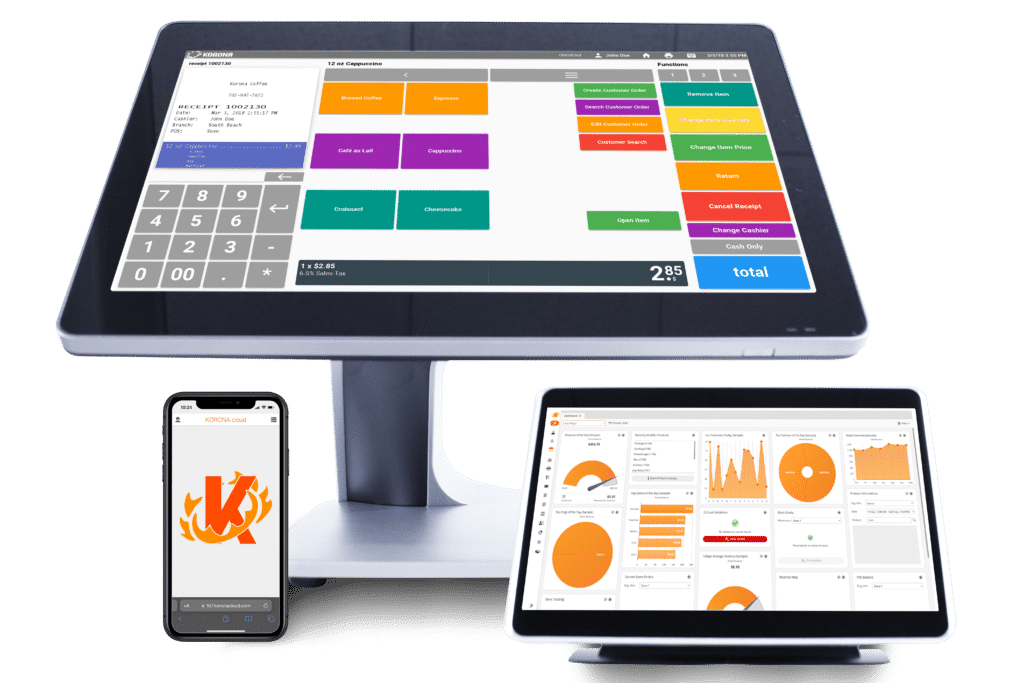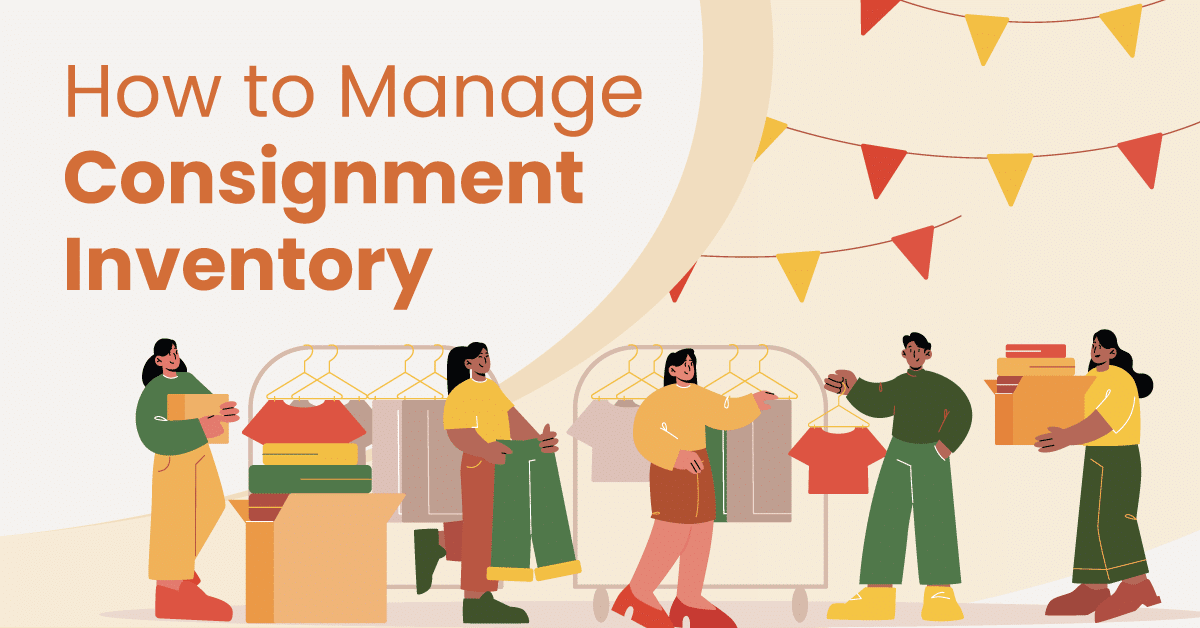Managing inventory can be a high-stakes balancing act—especially for small businesses trying to stay lean without missing sales opportunities. The consignment inventory model allows retailers to stock products without paying for them upfront, while suppliers retain ownership until the items are sold.
In this guide, we’ll explain everything you need to know about consignment inventory, from how it works to real-world examples and best practices for keeping it running smoothly.
💡 Key Takeaways:
- Consignment inventory is a business structure in which goods are owned by a supplier but held and sold by a retailer.
- In consignment inventory, retailers sell goods at a markup and share profits with the supplier, shifting ownership and risk.
- Manufacturers and retailers use consignment to reduce upfront costs, test new markets, and increase brand exposure.
What Is Consignment Inventory?
Consignment inventory is a business arrangement in which a supplier places goods in a retailer’s store but retains ownership until the product is sold. This setup minimizes retailers’ financial risk and gives suppliers more exposure for their products.
The retailer (consignee) only pays for the stock once it’s purchased by customers, making it a low-commitment way to test new inventory.
How Does Consignment Inventory Work?

In a consignment model, the supplier (consignor) ships inventory to the retailer (consignee), who displays and sells the products. Unsold goods can be returned, while sold items trigger payment to the supplier.
Retailers gain shelf-ready stock without upfront costs, while suppliers maintain inventory visibility and control until the point of sale.
Who Uses Consignment Inventory and Why?
Retailers in industries with high turnover or variable demand—like fashion, bookstores, electronics, or pet supply stores—often use consignment to reduce inventory risk.
Suppliers benefit from access to retail space without needing to negotiate bulk purchases. It’s a flexible model that supports testing new markets or product lines.
Vendor-Managed Inventory vs. Consignment Inventory
Vendor-managed inventory (VMI) and consignment inventory are closely related terms, but they differ in certain aspects:
Feature | Vendor-Managed Inventory | Consignment Inventory |
Ownership of Inventory | Retailer owns inventory once delivered | Supplier retains ownership until items are sold |
Independent Store | Supplier monitors and restocks based on sales data | Supplier may restock, but ownership remains with them |
Payment Timing | Retailer pays upon delivery or based on agreement terms | Retailer pays upon delivery or based on agreement terms |
Inventory Risk | Retailer bears the risk of unsold goods | Supplier bears the risk of unsold goods |
Typical Use Cases | High-volume or essential goods with stable demand | Niche, seasonal, or trial products with unpredictable demand |
Returns | Usually limited or not accepted | Often allowed for unsold inventory |
Storage Location | On retailer's premises, but supplier may control stock levels | On retailer's premises, supplier retains ownership rights |
Vendor-Managed Inventory
With vendor-managed inventory (VMI), the supplier manages inventory levels, but the retailer owns the stock once it’s delivered. The supplier monitors usage and restocks as needed.
This proactive approach allows for reduced stockouts and improved efficiency.
Consignment Inventory
In consignment, the supplier retains ownership until the item is sold. The retailer doesn’t pay upfront and can return unsold items, offering greater flexibility, lower financial risk, and less chance of slow-moving inventory.
Advantages & Disadvantages Of Consignment Inventory For Retailers
Using consignment inventory gives retailers access to a wider product range with less financial risk, making it ideal for testing new products or brands. However, it also introduces complexity in terms of inventory management and can limit control over the products being sold.
Pros | Cons |
Lower upfront investment | Limited control over inventory |
Reduced risk | Administrative complexity |
More diverse product offerings | Storage space use |
Pros of consignment stock for consignees
- Lower upfront investment: Retailers don’t pay until the product sells.
- Reduced risk: Unsold items can typically be returned.
- More diverse product offerings: Easier to experiment with new items or vendors.
Cons of consignment stock for consignees
- Limited control over inventory: The supplier may influence product selection and pricing.
- Administrative complexity: Requires accurate tracking and reporting.
- Storage space use: Retailers still bear the cost of displaying and storing items.
Advantages & Disadvantages of Consignment Inventory for Consignors
Consignment allows suppliers, manufacturers, or wholesalers to get their products into more retail spaces and gather real-time data on product performance. But delayed payments and a lack of inventory control once goods leave their hands can strain resources and increase risk.
Pros | Cons |
Expanded market reach | Delayed revenue |
Inventory control | Potential for product damage or shrinkage |
Customer feedback loop | Logistical overhead |
Pros of consignment stock for consignors
- Expanded market reach: Products gain retail visibility without needing a storefront.
- Inventory control: Ownership stays with the supplier, allowing for better forecasting and flexibility.
- Customer feedback loop: Real-time insight into product performance.
Cons of consignment stock for consignors
- Delayed revenue: Payment is only made when items sell.
- Potential for product damage or shrinkage: Stock is outside the supplier’s direct control.
- Logistical overhead: Requires systems to track what’s been sold, returned, or remains unsold.
What Should a Consignment Stock Agreement Contain?
A well-drafted consignment agreement clearly defines expectations and responsibilities to protect both the consignor and the consignee. This ensures transparency and helps avoid costly disputes down the road.
A solid consignment agreement should include:
- Terms of ownership
- Payment timelines
- Return conditions for unsold goods
- Duration of the agreement
- Liability for damages or losses
- Inventory tracking responsibilities
Best Practices for Managing Consignment Inventory
Use our list below to review the best practices retailers must consider when managing consignment inventory and relationships.
Practice #1: Use Inventory Management Software
Automated POS systems like KORONA POS help track sales, returns, and stock levels in real time, reducing manual effort and errors.
Practice #2: Define Clear Terms
Ensure both parties agree on payment schedules, return policies, and product responsibilities to avoid misunderstandings later. Your consignment stock agreement will outline all of this and more.
Practice #3: Regularly Audit Inventory
Schedule frequent audits to ensure physical stock matches your records. This helps avoid shrinkage, misplacement, or accounting errors.
Practice #4: Analyze Sales Trends
Use POS data to monitor product performance. Remove underperforming items and double down on fast movers.
Practice #5: Communicate Frequently
Stay in close contact with your consignment partner to discuss restocking, promotions, or shifts in demand. These relationships are key to embracing consignment models.
Get started with KORONA POS today!
Explore all the features that KORONA POS has to offer with an unlimited trial. And there’s no commitment or credit card required.
Examples of Industries Using Consignment Inventory
Many industries benefit from the flexibility and reduced financial burden of consignment models.
🎀 Example #1: Fashion Retailers
Boutiques often use consignment to stock unique or seasonal items from local designers without committing capital upfront.
📚 Example #2: Bookstores
Independent bookstores may consign books from self-published authors or local writers, allowing them to diversify offerings.
🦴 Example #3: Pet Supply Stores
Pet stores may offer niche or specialty products—like handmade pet accessories—on consignment to test interest before committing to bulk purchases.

Streamline Your Consignment Inventory with KORONA POS
Managing consignment inventory doesn’t have to be a logistical headache. With KORONA POS, you get real-time tracking, automated reporting, and custom inventory tools designed for businesses of all sizes. And it works as anywhere from a small business POS to a franchise POS.
Whether you’re managing a boutique, bookstore, or pet shop, KORONA POS can simplify and optimize every step of the process.
FAQs: How To Manage Consignment Inventory
How do I track what’s been sold and what’s still in inventory?
Use a POS system like KORONA POS with real-time inventory syncing and reporting to keep your consignment inventory tight.
What happens to unsold consignment stock?
Unsold consignment stock is typically returned to the supplier per your agreement terms.
Can I use consignment for online sales?
Yes—with integrated POS and eCommerce tools, you can manage online consignment just like in-store.
Is consignment inventory right for my business?
If you’re looking to expand your product range without high upfront costs, consignment is worth considering. Contact KORONA POS to get started.












